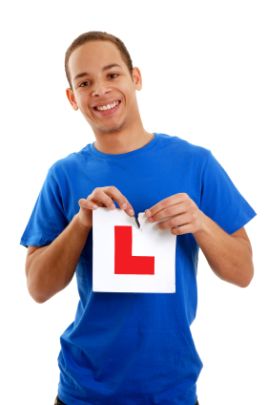Various road markings you might find
Many drivers who are good at interpreting and understanding what a large range of road signs mean are not so good when it comes to road markings.
Some drivers appear to not even really be aware of what the road markings are where they are driving - for instance whether the line is dotted or if it is a sold line. However it is important to look at the road markings where they are and react accordingly to the information that they give you.
The usual centre lines you will see are a single dashed line in the middle of the road and this is the classic pattern we all think of. However, you will often encounter two lines, with the one nearest you being a solid white line and the furthest away being dashed. Do you know what this means?
It means you must not cross the line unless you are going around an obstruction, cyclist, or vehicle going under 10mph, or to turn off. However traffic on the other side can cross their white line, assuming that it is safe to do so.
Of course, if you were on the other side of the road you would see the markings the other way around; if there are variable markings like this it means that one side has much better visibility than on the other side of the road and that dictates what is and is not safe to do.
Another set of road markings is where there are two solid white lines down the middle, like double yellow lines only white and in the middle of the road. You've probably worked out what this means now - it means that drivers on neither side can cross the white lines.
Related Articles...
Practical Driving Test
There is an online booking system available for a practical driving test which you can access from the DirectGov website.
The web address to do this is: ...
What's the point of the theory test?
The official theory test is a relatively recent addition to the driving test, and has evolved and become more comprehensive over time. For many of us who ask our parents about the driving test,...
The lane discipline of a motorway
Driving on a motorway is not something you will be able to do until you pass your test, and therefore it is important to understand as much about motorway driving as you can before your first...
Motorway Driving Tips
Driving on a motorway for the first time can be both exciting and a little daunting - exciting as it is something new whilst daunting as you won't have experienced driving on a motorway before...
Your ignition system explained
The ignition system is of course an essential part of the technology that allows cars to function, and without it you would not get very far. But what does it do? Well the system provides the...
What are greener fuels
One of the most well known of the green fuels is something that is called Biofuel.
Biofuel is a group of different fuels rather than an individual fuel in itself, and the class contains things...
Your steering system
When it comes to driving the car, it is safe to say that the steering wheel is clearly an essential part! If you can't steer your vehicle, then you clearly cannot drive it.
There are two...
Prepare for driving theory tests
In order to pass tests, whether they are academic tests at school such as english, geography, spanish, french and so on, or to pass some other one - like theory tests - the methodology that can be...
Tips on preventing car crime
It is an obvious statement that nobody wants their car to be broken into or have items stolen from their car. Yet despite this some drivers take little care in discouraging theft.
There are...
Driving Test and Independent Driving
Independent driving - where the candidate is not following the directions given at each stage by the instructor but rather following a route, e.g. following road signs to Town X until the instructor...
Back to home page of driving theory test questions

